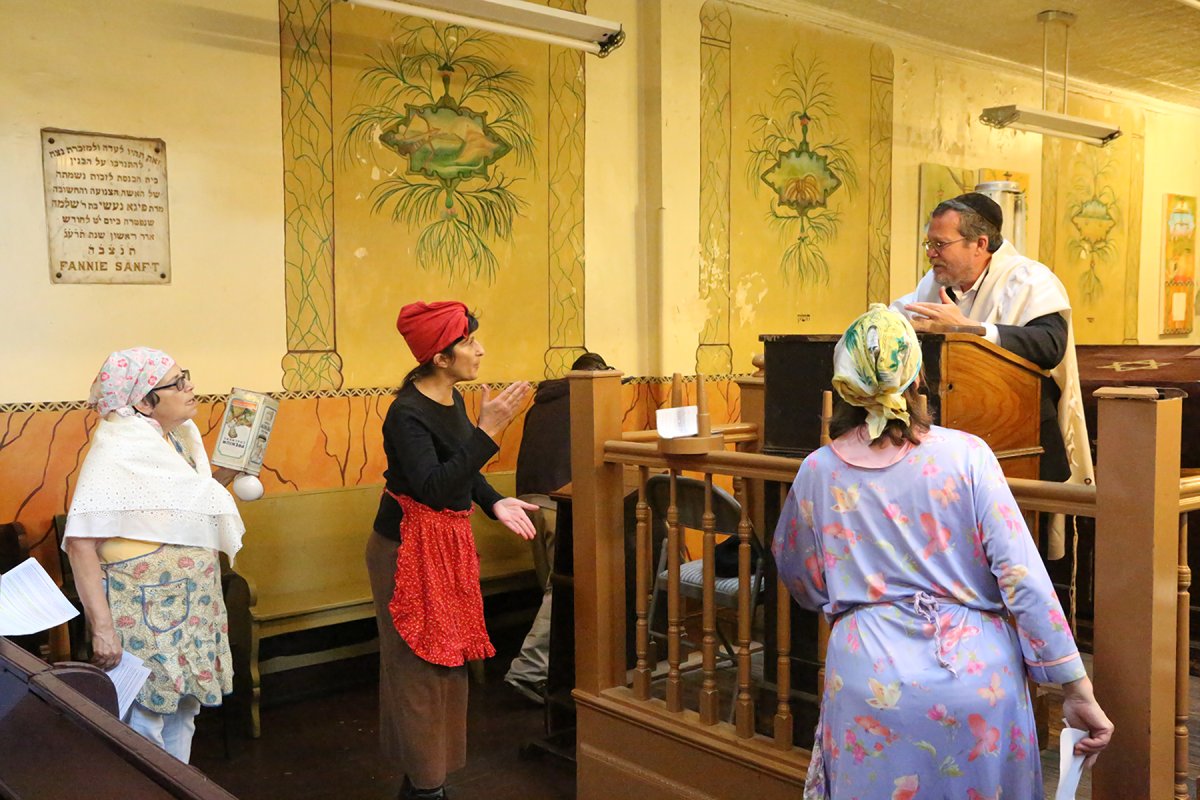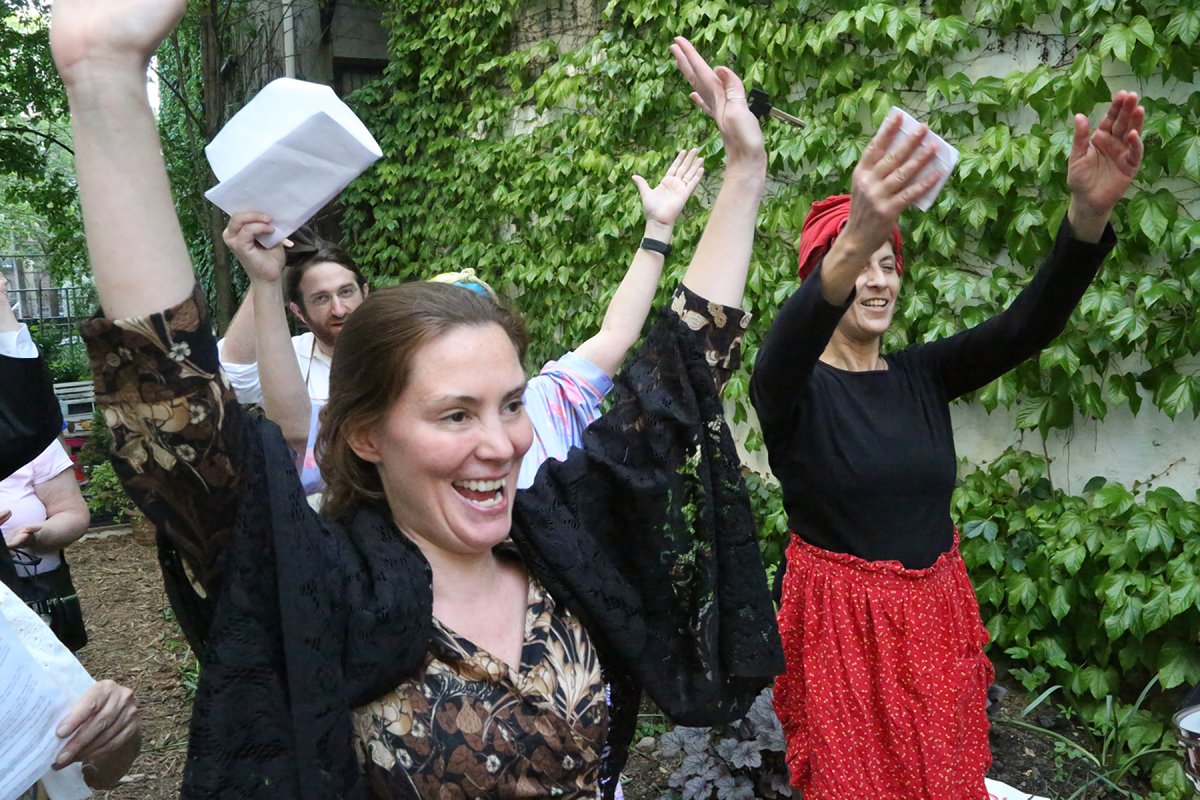
The historic Stanton St. Shul and the Siempre Verde Garden, the Lower East Side’s newest garden, were the setting last weekend for the re-enactment of a historic protest by local women more than a century ago against an outrageous hike in the price of meat. The women’s boycott became a model for future street protests and rent strikes. The Meat Trust had raised the price of kosher meat from 12 cents to 18 cents, an amount local housewives could not afford, eventually leading to the Kosher Meat Boycott of 1902. The ladies protested, marched into the street, into butcher shops, taking out meat and rendering it inedible by soaking it with gasoline. They marched into the synagogues, eventually getting rabbinical support. At the protest’s high point, 20,000 women banded together in the effort. As The New York Times reported on May 17, 1902, the boycott sparked a “riot,” with 85 women, 75 of them Jewish, arrested. During the mayhem, one woman even slapped a cop’s face with a piece of liver. The resistance worked: On June 9, meat prices dropped back down to 14 cents.


















